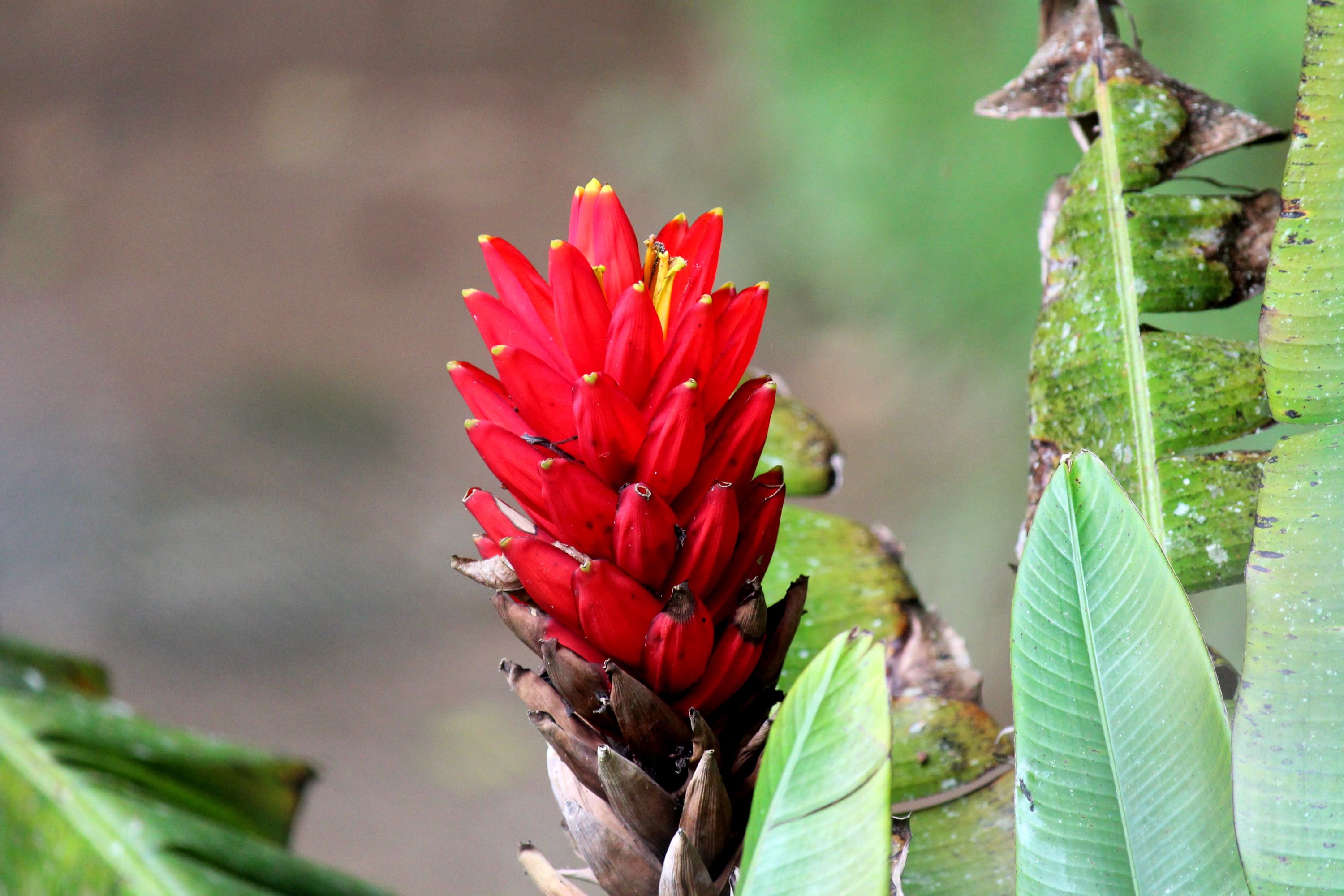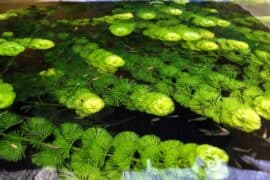Scarlet banana
(Musa coccinea)

Description
Musa coccinea, commonly known as scarlet banana or red-flowering banana, is a species of flowering plant in the banana and plantain family Musaceae, native to tropical China (in Guangdong, Guangxi, and southeastern Yunnan) and Vietnam. It is a bat-pollinated evergreen perennial, placed in section Callimusa (now including the former section Australimusa), having a diploid chromosome number of 2n = 20. The flower cluster is more rounded than in the related species M. beccarii. It is made up of erect spirals of red bracts which enclose tubular yellow flowers. The inedible fruits are orange, only about 2 cm (0.8 in) long, and contain seeds. The species is cultivated for its ornamental value, being grown, for example, along with heliconias in commercial farms in Hawaii. It does not tolerate temperatures below 10 °C (50 °F), so in temperate zones requires protection during the winter months. In the UK it has gained the Royal Horticultural Society’s Award of Garden Merit. M. coccinea is a known host in the New World of the red palm mite (Raoiella indica). Musa is one of two or three genera in the family Musaceae. The genus includes flowering plants producing edible bananas and plantains. Around 70 species of Musa are known, with a broad variety of uses. Banana plants represent some of the largest herbaceous plants existing in the present, with some reaching up to 9 metres (30 ft) in height. The large herb is composed of a modified underground stem (rhizome), a false trunk, a network of roots, and a large flower spike. The false trunk is an aggregation of the basal portion of leaf sheathes; it is not until the plant is ready to flower that a true stem grows up through the sheath and droops back down towards the ground. At the end of this stem grows a peduncle with many female flowers protected by large purple-red bracts. The extension of the stem (this part called the rachis) continues growth downward where a terminal male flower grows. The leaves originate from a pseudostem and unroll to show a leaf blade with two lamina halves. Musa reproduces by both sexual (seed) and asexual (suckers) processes, utilizing asexual means when producing sterile (non-seedy) fruits. Further qualities to distinguish Musa include spirally arranged leaves, fruits as berries, latex-producing cells present, 5 connate and 1 member of the inner whorl distinct, and petiole with one row of air channels.
Taxonomic tree:







